24 Abr The death and resurrection of Notre Dame
Our Lady of Paris. That’s how Victor Hugo called one of his best-known novels and have given more to talk about in the past years. Published in 1830, it tells a heartbreaking story with three vertices: the beautiful gypsy Esmeralda, the hunchback Quasimodo and the archdeacon Frollo. Three vertices, as well as the three great Gothic cathedrals of Europe: Notre Dame of Paris, Notre Dame of Reims and Santa María de Regla of León.
Between 1140 and 1270, 1,108 abbeys were built in France, precursors of the great cathedrals when we still did not have the capacity to build them. The impeller of the cathedral of Paris was Maurice de Sully, bishop of the city, who counted on the presence of Pope Alexander III for the laying of the first stone of such a monument. We do not know the name of its architect, since, as we already know, the current that impelled the artists and virtuous of the stone to sign and claim their creations appears centuries later, in the middle of Italy. It is rumored about the participation of the Templars, or at least of their ideas and money, in the construction of Notre Dame. The sudden appearance of signs that allude to Salomon between the Gothic walls, as well as the fact that Saint Mary of Vezelay was driven by Bernardo de Claraval, Templar patron, thus being the first known Gothic church … in short, there are indications that the privileged situation of the Templars due to the Omne Datum Optimum of 1163 allowed them to contribute a large amount of money for such work. We could enter into the wonderful comparisons between Gothic art and Orientalism, as is the medieval and Egyptian imaginary, but Javier Sierra has done it recently and masterfully for El Mundo and I do not want to repeat myself.
Basically, and returning to what concerns us, in 1160 the construction of the new cathedral is ordered, on the ground where before it could be seen a church dedicated to St. Stephen, and before this, a temple of Jupiter, and earlier still in the History of Humanity, Celtic constructions. In 1185 the first Mass was celebrated among its walls, barely built yet, by Heraclius, the patriarch of Jerusalem, and in 1200 the central nave was completed. Forty years alone, a milestone of the time. Until 1260 they continue building, realizing the arms of the transept between 1250 and 1267 with Jean de Chelles and Pierre de Montreuil.
This monumental building survived the Black Death, but not much of the Parisian population. Also to the Hundred Years’ War, when Henry VI was crowned king of France in 1431 inside the cathedral. He was also able to survive the wars between Catholics and Huguenots, but they did not make it part of the external sculptures. In the French Revolution the damages are more accused: the temple has been desacralized, and Notre Dame takes the role of a food store. The statues of the kings of France that decorate the frieze of the main facade are decapitated, and the bells are re-united in the wake of the Revolution. In 1804 Napoleon crowned himself there as emperor of France – I have to say that I understand this bad habit to be crowned at Notre Dame: it must be incredible to feel emperor under his vaults – before Pope Pius VII, and for that reason it is given consideration of minor basilica. The first fire that the cathedral suffered was not in 2019. It was in 1871 when, during some acts of the revolt of the Paris Commune, it suffers fire damage. In the twentieth century both World Wars take its toll, but especially the second: Reims is destroyed by the Germans, while Notre Dame suffers mostly damage to the stained glass.
It should be noted that Notre Dame has not remained unchanged over the centuries. It can not even be affirmed that his only changes have been motivated by riots and damages. In the seventeenth century, in the reign of Louis XIV, graves and stained glass were destroyed to adapt these elements to the taste of the time. Between 1630 and 1707 the guild of goldsmiths of the city commissioned a work per year to famous French artists, presenting them during the month of May: 76 large works that leave the cathedral in desacralization, of which we now retain about 50, remaining 12 in the cathedral of which we do not know his state now.
THE DECLINE
Tabla de contenidos
Victor Hugo already denounced in the nineteenth century the announced death of the walls of Notre Dame. And it is that, if we remember and look back, the cathedrals have suffered untold torments caused by human apathy from practically its construction. The love that was felt particularly in Gothic times by the tall and thin structures concluded with not one, not two, nor three collapses of the same short time after its construction. It was in 1843 when the restoration of the cathedral of Paris was undertaken, hand in hand between Eugène Emmanuel Viollet-le-Duc and Jean Baptiste Antoine Lassus, both restorer architects who, at the time, enjoyed renowned prestige. It does not end until 1857, undertaking a restoration called “of style”, in which the restorer architect sought to go back to the original ideas of the mind of the original architect to carry them out even more accurately than it was originally.
This couple restored many buildings, especially Romanesque or Gothic, such as the basilica of Saint Mary of Vézelay, the Saint Chapelle in Paris, the Sentinel Hall of Sens, the village of Carcassone, Saint Sernin in Toulouse, the castle of Pierrefonds or the cathedral of Saint Front of Périgueux, among others. All the principles proposed by Viollet are taken as a kind of dogmas, in a large part of Europe, where a series of architects, followers of Viollet, who are called violleters, emerged. They took over the reins of architectural restoration in Europe for many decades. In Spain we see Juan de Madrazo -Cathedral of León-, Elías Rogen -Santa María of Ripoll-, Manuel Aníbal Álvarez -San Martín of Frómista-, Adolfo Fernández Casanova -Cathedral of Seville-, Arturo Mélida -San Juan de los Reyes, Toledo- and Vicente Lampérez and Romea -Cathedrals of Burgos, Cuenca and the Casa del Cordón in Burgos- and Joaquín de Vargas and Aguirre -Salamanca-. In Spain, the year 1869 is approaching as the starting date for the restoration of style, when Juan de Madrazo assumes the restoration of León Cathedral.
Soon this current of restoration was harshly condemned and that condemnation also begins in France. One of the first to raise his voice is Victor Hugo, who condemns it because he understands that a restoration of style is lacking in archaeological authenticity. It is considered a mystifying, imitating, falsifying restoration. They are detractors, in short, to obtain the pristine form of a building through a restoration. It is a historical falsification. It is also true that Victor Hugo was a defender of not restoring the monuments, he considered it sacrilegious. Its maximum rejection comes in the first third of the twentieth century, which will be manifested mainly through the major European legislations, especially the Italian in 1931 and the Spanish in 1933, which does not mean that there are no defenders. Still today there are defenders of the restoration of style, despite being prohibited by law. The architectural restoration of style, like the other theories, have their parallel, their consequence and their applications in the restoration of movable property.
“In the same way that no poet will finish the incomplete verses of the Aeneid, no one will finish a painting by Raphael, no sculptor will finish a statue of Michelangelo, so no architect should consent to complete a cathedral.” Adolphe Didron “Annales Archéologiques” 1845.
“One should profess the maxim that it is better to keep than to repair; that it is preferable to repair to restore; since in no case should be allowed to add even under the pretext of adornment. “Charles F. René de Montalambert. “Annales Archéologiques” 1845.
“If the missing part was remade so perfectly that nobody noticed it, this provoked scruples, because with this method the next generations would be deceived, for what he advocated to make the old parts differentiated, it was because of the texture or the color of the stone, the absence of molding or the kind of polish. “Anatole Leroy-Beaulieu” Reveu de Deux Mondes “1874.
Returning to the cathedral in question, we see that the needle was an addition of the nineteenth in the framework of this restoration, as well as two more needles that crowned the two bell towers of the main facade, which finally were not carried out and that today, precisely today, is something that I deeply appreciate. The frieze of sculptures of this facade, with the kings of France, is completed again after the damages produced during the Revolution. A new sacristy is also made, completely Neo-Gothic, as well as all the flying buttresses of the head and the central nave, while the clerestory is renewed with a series of windows decorated by gables that are new. On the other hand, all the buildings that surrounded – and in some cases were attached to the cathedral itself – are thrown down, generating the great square that still surrounds it today.
THE FIRE
Year 2019. April 15, ironically World Art Day, and Notre Dame has burned to burst at 18.50h. The fire is declared in an undetermined area covered by scaffolding due to the recent restoration that was being undertaken around the needle area of Viollet-le-Duc, we do not know yet whether it started on the needle itself or in the vicinity. It is virulent, it is strong, and despite the efforts of the firemen who are quickly mobilized to the place, at 19.53h the needle, made of wood and lead, falls. With it falls the rooster that crowns it and that keeps three relics inside: a thorn from the crown of Christ, and the relics of Saint Genevieve and Saint Denis. By then, we know that the copper Apostolate that usually decorates the arrow -so the needle was popularly called- are safe, removed in the middle of restoration work.
According to Reuters, the roof falls at 8:15 p.m. Shortly after we started to get live images recorded by drones from the French police, which in my case make me fear the worst: you can only see flames and remains of the skeleton of the Forest – the wooden deck of Notre Dame, named after the numerous wooden beams and their thickness – and we are not clear if we are seeing the fire on the vaults or if these have already fallen and the flames are especially high. There are constantly collapses and blows, which supports the theory that the vaults have collapsed.
I am at that moment in a friends’s house. The news found me in the street, thanks to a call telling me. I imagine that the initial idea was to do what I do today, give news, tell what happens, but I was not able. I hurry, tearing away tears, as far as I can sit in a safe place and dedicate myself to reading, reading and reading. The perspectives are bleak. The streets of Paris are full. The Ile, partially dislodged by the risks that the collapse of the cathedral would pose for nearby buildings, is deserted. The cathedral has been burning for an hour and a half, it is 8:30 pm and voices are beginning to be heard that overlap the drama. The second, to a certain extent, because if the vaults had fallen as was thought at that time, the huge work that were rushing the walls and flying buttresses without that much needed support of the nerves to hold the weight of the cathedral, also harmed by the smoke and the fire, and even the water that firefighters use to save the cathedral, the cathedral would have been very close to collapse.
For a long time there are no news. We heard, above all, several Spanish, European and American leaders talk about the event. The possibility of using tankers to quickly and efficiently extinguish the fire is mentioned. The nearby ones ask me, and I explain that it would overload the stone in such a way that, being weak as it is, the structure would collapse. I remain silent, and a little later I comment that it may be necessary. If the cathedral is really going to collapse, it would be advisable to carry out a controlled collapse and extinguish the flames previously, to avoid possible damage to the adjacent buildings.
At 8:46 pm the Ile is totally evacuated. This only reaffirms that feeling of defeat and abandonment. They really fear having to demolish Notre Dame of Paris, they do not know if they are capable of saving it, and no one could blame them. The lead of the needle, the ceilings and the stained glass provide a calorific power to the flames that complicates the entire operation. The voices asking for tanker planes grow, and it is Ribera Blanco himself, professor of History and Architectural Restoration and deputy director of the Institute of Cultural Heritage of Spain, who jumps to silence them, explaining the situation. He comments precisely on the case of a sister cathedral, the Leon, which was saved because this type of measure was not taken in its 1966 fire. It also explains the danger of lead, and that of the slate, material with which the roof is covered and the dome. Likewise, he expresses his fear for the baroque sculptures of the choir and for the endurance of the nerves of the vaults.
It is at 9.44 pm when a spokesman for the Parisian fire department says the terrible words: “The next hour and a half is decisive. We are not sure we can control the spread of fire. We do not know if we can save the cathedral.” At 21.56 it is confirmed that the fire has reached the north tower, and that a score of firefighters have entered the interior. I throw my hands to my head: I do not need to be told that if they do not control the fire there, the tower will fall, and with it, the vaults if they are still standing, and part of the walls. A Gothic cathedral is a house of cards: hard and resistant, but composed of a kind of mystical balance that would be tremendously affected.
A long, long time passes, until the bittersweet news is heard: “Notre Dame has been saved.” Oh yeah? My first thought is skeptical. In my opinion, we have seen his dome fall, his needle, we have seen stained glass windows and the smoke come out of his interior, while they only repeat that “the most important works have been evacuated”. Have they saved the shell? And it is not because it is ominous, or because it is not considered important such a Gothic jewel, no matter what shell it is. It is that Notre Dame is a calculation: his paintings, his choir, his sculptures, his floor, his columns, his clerestory, his magnificent vaults, his rosettes and stained glass windows, their covers. It is a computation, and we have seen a part of it burn. No, at that time I did not feel comforted, but I was glad I was wrong.
It is then when it is announced that the crown of Christ and the tunic of St. Louis have been saved. I do not raise my eyebrows anymore because it is not humanly possible. I understand that the intervention had to be quick and that they could not take out, for example, the Pieta of Coustou, but … I shake my head. It is not a matter of entering into it. My heart aches to think of everything we have lost that night.
At 10:56 p.m. the firemen access Notre Dame, and soon after they begin to circulate the images through social networks. These men, unnamed heroes of the night, have stopped and have used their mobile phones to show us the interior, because they believe that Paris and the world need to know. It is then when it is confirmed that only the vaults of the transept and the transept have fallen, and I breathe. The destruction is perceived in its interior, among other reasons because the remains of the needle still smoke on the floor of the cathedral, and the stones that once made up the vault that held it are now shattered. But still standing, and in the background I see the altar and the sculptures that make it up. A ray of hope. At the time, the hell above: through the hole left by the dome we see the Forest burn, and that shows us that not everything is still saved.
#NotreDame En immersion avec les pompiers dans le brasier pic.twitter.com/PS3KwnwAEr
— Thomas G. Savage (@thomasgsavage) April 15, 2019
A special robot is then used to lower the interior temperature progressively, with the aim of allowing access to the professionals who have saved the night and the world. There are 400 troops deployed and the fight is expected to last several hours longer. The fire is controlled, but not suffocated. Meanwhile, all of Paris is kneeling in its streets, singing and praying for the great mass of stone that remains burning in the middle of the night. It’s something mystical: they can not do anything for her, but they can not stop looking and, in some way, send their wishes in the best way they know.
It is not until four in the morning when the fire is declared controlled and partially suffocated. At seven o’clock we started to collect new statements, which encourage what I expressed the previous night: they are not clear about the effects of fire, smoke and water on the structure, and studies will be carried out on the following 48 hours. It is vital to know the vulnerabilities that, now, we know are mainly in the vaults. The images and videos of the cathedral rain on us. A malicious cause is ruled out and it is reported that two thirds of the roofs of the cathedral have burned completely. At 10 o’clock in the morning the fire is considered completely extinct.
VICES AND VIRTUES
It is now when we can sit down and start the damage balance:
-
First, the needle, a wooden structure covered with slate from the 19th century. When falling it caused the collapse of the fourth sixpartite vault. It was 93 meters high, and fell next to the bell tower.
-
In second place, the Forest, a 13th century structure that had 1,300 oaks cut down in 21 hectares of forest, each beam belonging to a different tree.
-
Third, the rosettes, which are still standing but extremely damaged by the heat. The smaller rosettes have suffered damage when the lead that binds the stained glass merges.
-
Fourth, the vaults. Three have fallen, the cruise, part of the fourth of the main ship and half of the south arm of the cruise. Vulnerability has been identified in the structure of the building, especially in the transept.
-
Fifth, the organs. The main one, the choir and the laptop, this third being the one that has been destroyed. The eldest is safe, although the structure is weakened.
-
As for the saved, we see that the Mayans have been saved, although they are damaged by water and smoke, because they can not be picked up in time due to their large size. The copper statues of the needle also, because they were extracted on April 11, and the altar, likewise, seems safe as shown by the photographs.
900 MILLIONS DOLARS… AND GROWING
The town has been overturned with the restoration of the cathedral. Emmanuel Macron promised before the image of Notre Dame that it would be reconstructed, and quickly appeared LVMH (Louis Vouitton Moët Hennessy), one of the main groups of France, property of Bernard Arnault, with the news of the donation of 200 million for the cathedral, as well as the offer of its creative, architectural and financial teams. L’Oréal and the Bettencourt donated another 200 million, 100 from the foundation and another 100 from the family fortune. Pinault, for its part, will donate 100 million. Total oil company will donate 100 million euros, and other companies such as Apple or JC Decaux have promised between one and twenty million. The European Central Bank, for its part, has also announced an economic contribution although it has not specified that amount. The Paris City Council has contributed 50 million euros, and the president of the region, Valérie Pécresse, another 10 million of emergency funds.
Internationally we see that several American organizations have turned to fundraising, such as the French Heritage Society, which already contributed more than 800,000 euros last year to the French National Library. GoFundMe, for its part, has launched a fundraiser with more than 50 campaigns. UNESCO has also put all its baggage in the field of restoration in Paris, as well as the mayor of Paris, Anne Hidalgo, has arranged to hold a large international conference with patrons of the world to organize the contributions.
FIVE YEARS OR TWENTY?
What many of us feared has happened. Although we have already seen that the contributions to the restoration of the cathedral are numerous, it is not yet known what the procedure will be. And it is that a debate is taking place that should not have a place in the times that run. Let’s see what the experts think about the matter:
-
Carmen Lorenzo, director of the Superior School of Conservation and Restoration of Bens Culturais of Galicia (Spain): she does not pronounce herself, although she does require anastilosis-the recovery of the appearance of the pre-fire cathedral. Likewise, it shows its willingness to use some differential for the renewed parties, thus avoiding false historical records and leaving evidence of what happened.
-
Javier Ribera Blanco, who we had previously mentioned, mentions the use of fireproof materials, such as iron, but he would not reproduce the sculptures and works already destroyed, but he would redo them in a more contemporary style.
-
Francisco Daroca, patron of the Contemporary Architecture Foundation (Spain), confesses that he would reconstruct it as faithfully as possible, leaving it as it was on the day of the fire, advocating collective memory and its particular presence. As it shows, a button: it mentions the Campanile of San Marcos of Venice, collapsed in 1902 and raised again.
-
Josep Ferrando, member of the College of Architects of Catalonia (Spain), defends the ideals of Viollet-le-Duc.
-
Cristina Aransay, head of the Restoration Service of the Diputación de Álava (Spain), would leave samples of the disaster.
-
Carlota Santabárbara, of the Professional Association of Conservators and Restoreds of Spain, is opposed radically to make a false history.
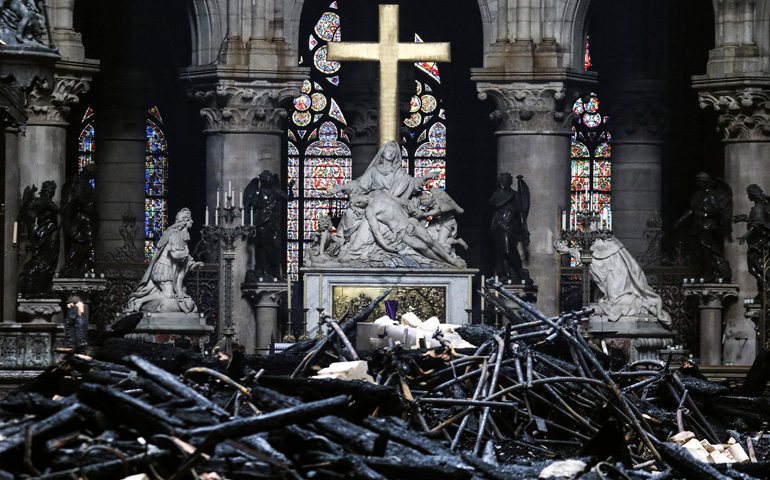
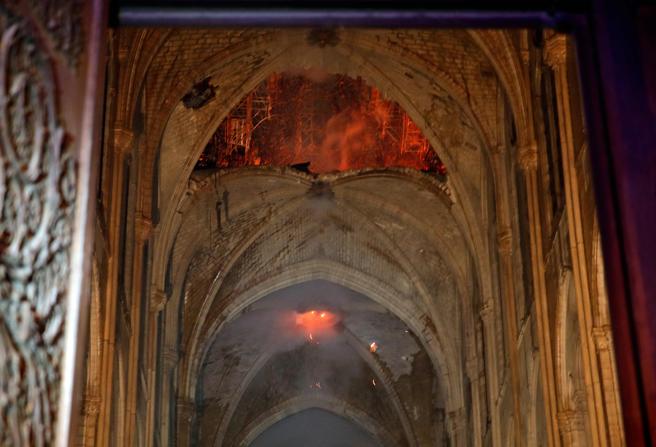
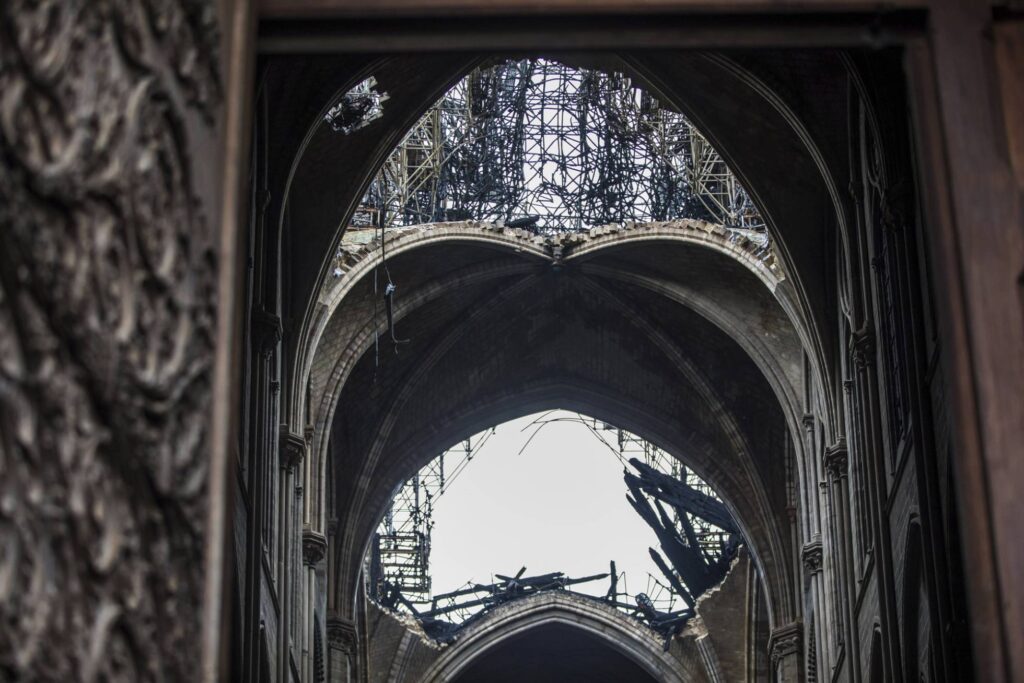
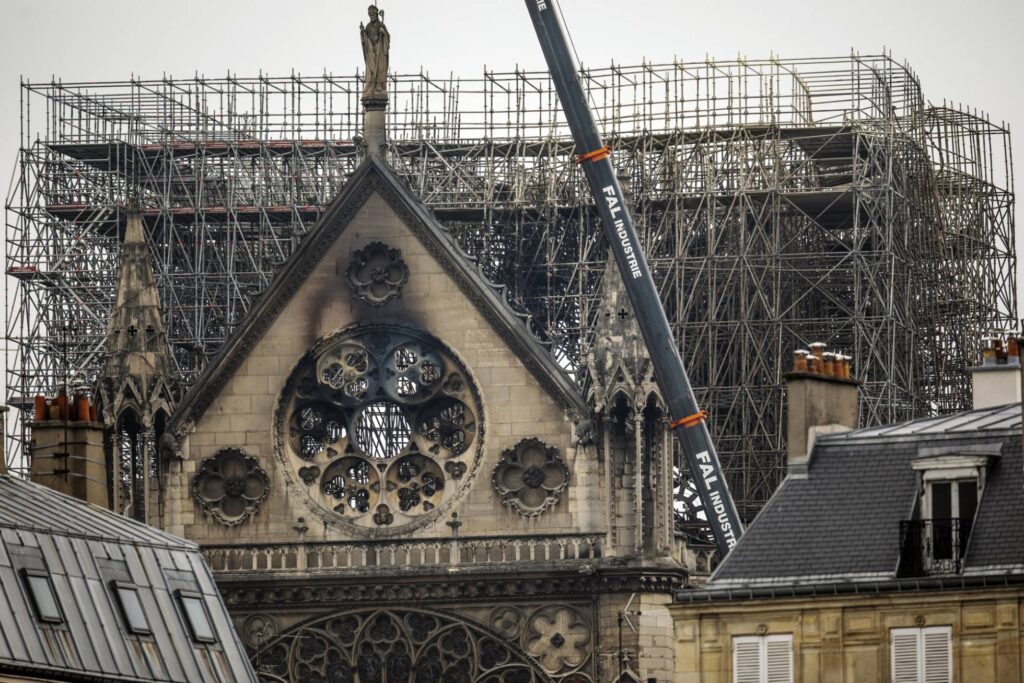
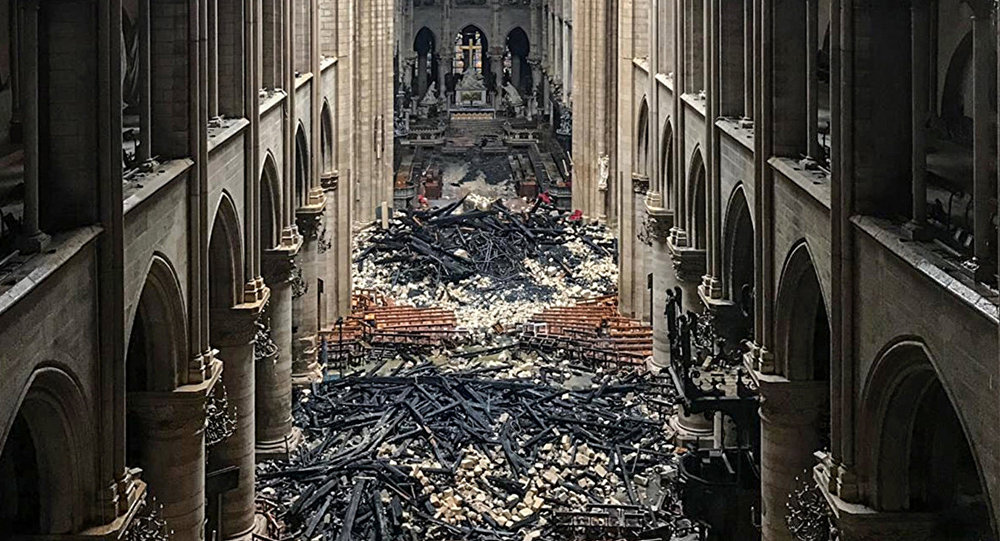
Más noticias de Arte
Especialista en pintura moderna, tasadora y perito. Graduada en Historia del Arte por la Universidad de Salamanca.



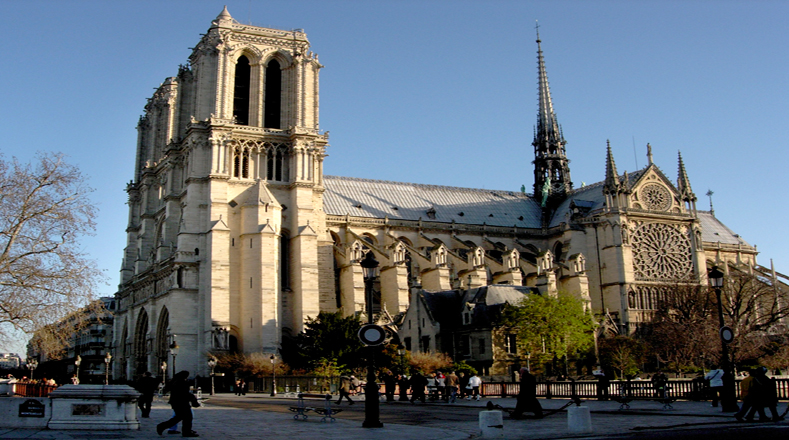
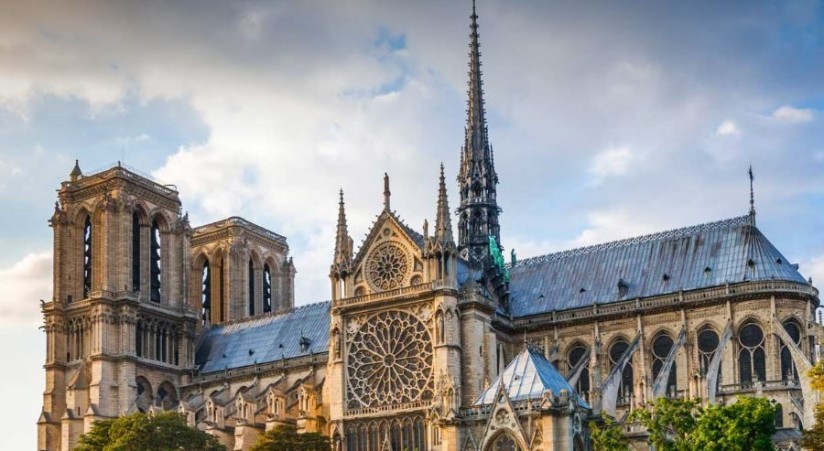
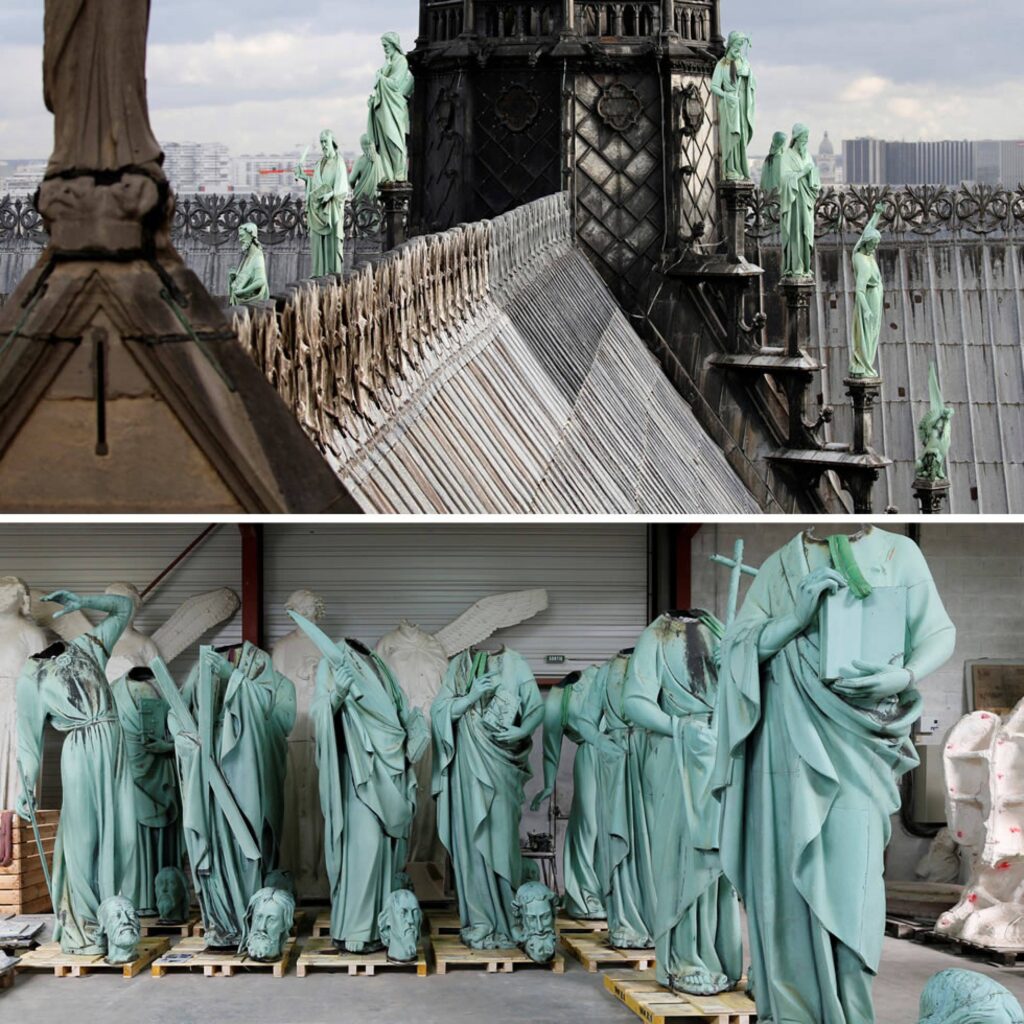
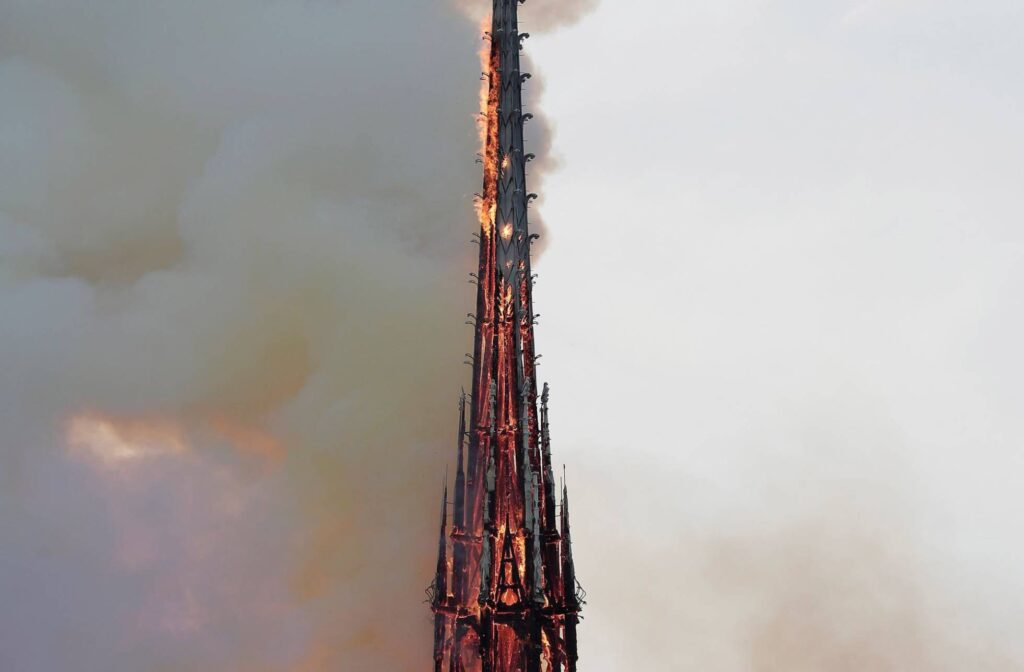
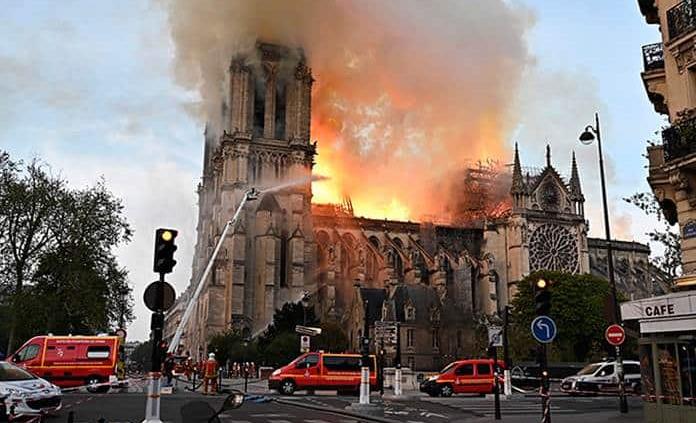
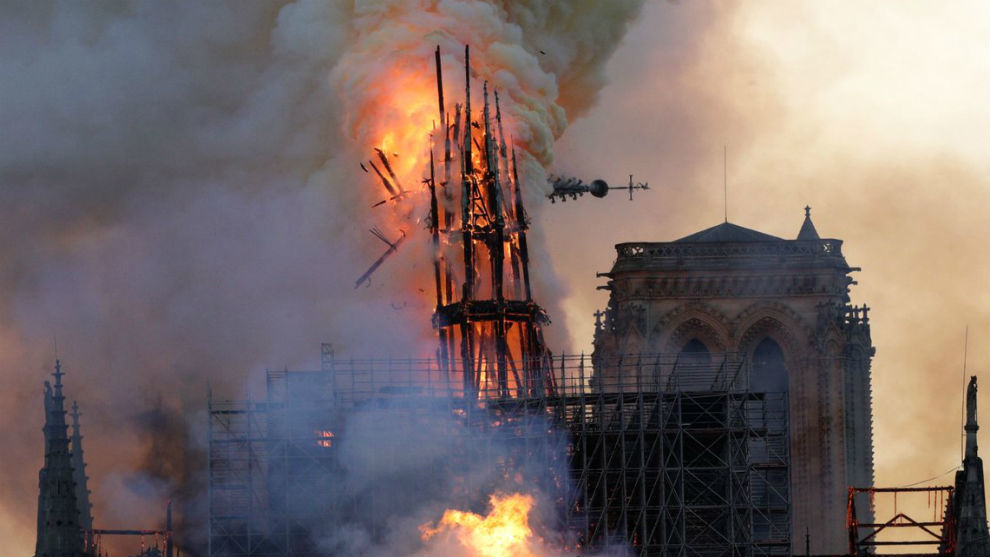
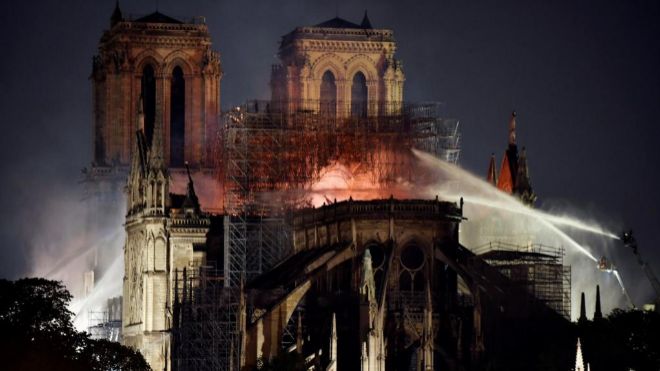
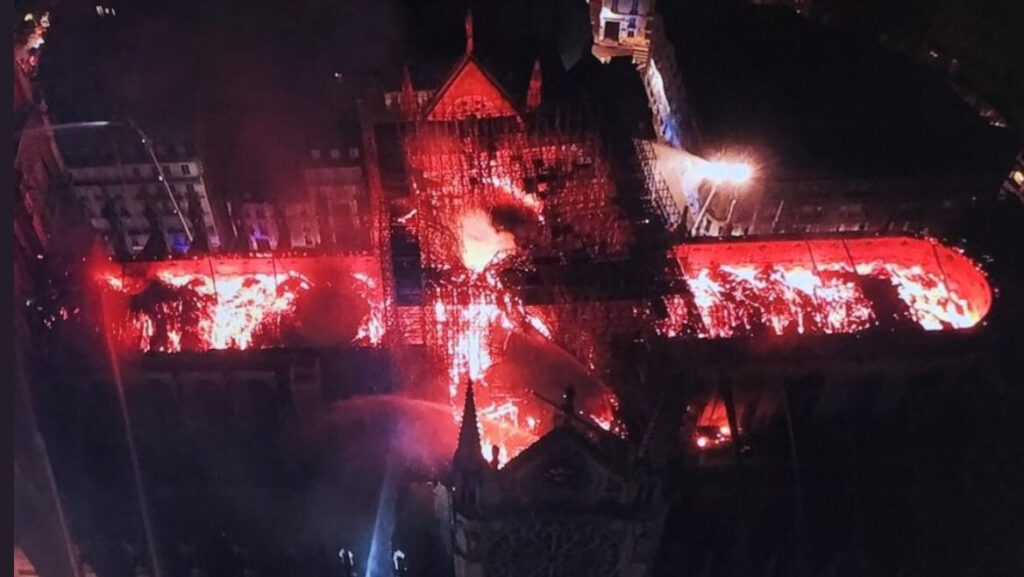
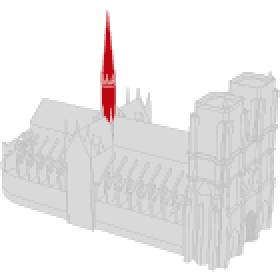
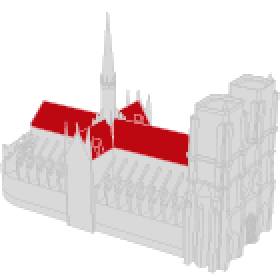
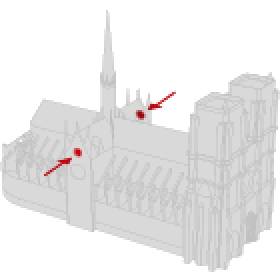



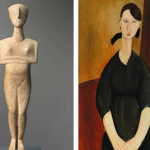

No Comments